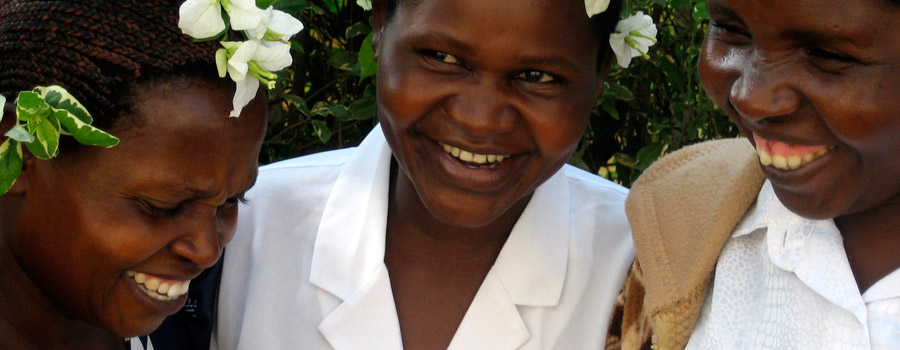The Fistula Care Digital Archive
Each year, more than one-quarter of a million women die in pregnancy and childbirth. Of those who do not perish, an unknown number suffer long-term health problems. The maternal injury with perhaps the most devastating aftermath is obstetric fistula. A fistula is a hole, or abnormal opening, in the birth canal that results in chronic, continuous leakage of urine and/or feces.
Obstetric fistula due to obstructed labor is by far the most common form of genital fistula in the countries where we work, constituting an estimated 80–90% of all genital fistula cases. Another form of obstetric fistula is iatrogenic, caused unintentionally by a health care provider—for instance, during a cesarean section. A third type, much less common, is traumatic gynecologic fistula, the result of sexual violence. Traumatic gynecologic fistula usually occurs in countries in conflict.
Obstetric fistula generally is caused by several days of obstructed labor, without timely medical intervention or cesarean section. During this time, the soft tissues of the pelvis are compressed between the baby’s head and the mother’s pelvic bones. The lack of blood flow causes tissue to die, creating a hole between the mother’s vagina and bladder or between the vagina and rectum, or both, and resulting in leakage.
Fistula is an issue both of gender inequality and of health inequity. Women who develop obstetric fistula usually have had a stillbirth, so they must deal with the loss of a child. Women with fistula are predominantly poor, have low education levels, and live in rural areas, where access to basic health services is limited (let alone emergency obstetric care). Fistula affects women of all ages and of all parities. While some women are abandoned because of their condition, many rely on the support of husbands or family members after they experience fistula. The longer it takes to gain access to services, the more likely the woman is to remove herself from contact with others or to be stigmatized, neglected, or abandoned. The physical, mental, and social toll of fistula worsens over time.
The Fistula Care project was funded from 2007 to 2013 by the U.S. Agency for International Development (USAID) through an Associate Cooperative Agreement.
USAID support to EngenderHealth for fistula services began in 2004 under the ACQUIRE Project, primarily focused on training in fistula surgery and strengthening the capacity of sites to provide quality fistula services. With the award of Fistula Care, the scope of work expanded to include a focus on prevention activities and to address the enabling environment for prevention and treatment.
Fistula Care worked to increase and strengthen the number of sites providing fistula services; to support prevention through advocacy, increased attention to the provision of emergency obstetric care, skilled attendance for labor and delivery, and the use of family planning; and to identify ways to support fistula clients following surgery to reintegrate them into their families and communities.
The strategic objective for the project was to establish and/or strengthen fistula prevention, repair, and reintegration programs in at least 12 institutions in Sub-Saharan Africa and South Asia. Fistula Care successfully established and/or strengthened fistula prevention and treatment services at 89 treatment and/or prevention sites in 14 countries. The institutions involved included ministries of health, faith-based institutions, and nongovernmental organizations.
The project’s vision was to:
- Introduce and implement a framework for fistula services to increase access to surgical repair while embracing the holistic continuum of care concept of prevention, treatment, and reintegration.
- Strengthen fistula prevention services by addressing four key prevention measures through coordinated efforts at the facility and community levels. At the community level, the focus was on creating awareness, dispelling myths, and engaging community leaders and communities in the continuum of care. At the facility level, we focused on four key interventions: family planning, consistent and correct use of the partograph, immediate catheterization for women who experience obstructed labor (which can also be a form of treatment for some fistula), and strengthened and appropriate cesarean delivery services.
- Introduce, adapt, and implement a quality improvement strategy that focused on the fundamentals of facility-based care to provide quality care to women by: ensuring informed and voluntary decision making for women with fistula; assuring safety for clinical services and procedures; and establishing or strengthening mechanisms for ongoing quality improvement.
- Contribute to the body of knowledge and evidence regarding fistula services through research and routine monitoring and evaluation, and partner with stakeholders at the local, national, and international levels to increase access to quality care for women with fistula and to disseminate lessons learned.
This Digital Archive contains publications, service delivery, training, and client education materials, research reports, and journal articles developed by Fistula Care and other important materials. It is organized into six main categories:
Additionally, the resources can be viewed by type.
The last section of the Digital Archive contains additional resources, including work done on fistula by EngenderHealth before Fistula Care, documents produced at the country level for specific settings, and external resources on fistula programming and research.
- Increasing Access to Fistula Services
- Preventing Fistula
- Engendering Quality
- Evidence-Based Programming
- Partnering for an Enabled Environment
- Transforming Lives: Stories of Clients
![[ Skip Navigation ]](data/images/c.gif)



